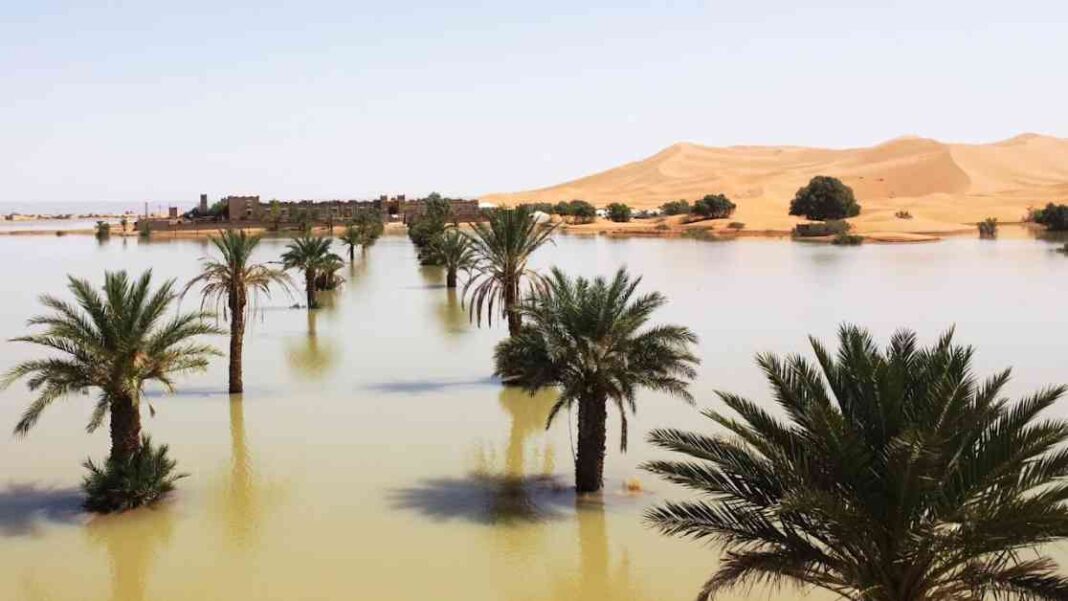It looks like a huge mirage. But these masses of water are not an optical illusion! Parts of the Sahara are actually flooded at the moment. What appears fascinating to the observer is, however, a deadly danger for the people on the ground! The current images were taken in Merzouga, a desert town with about 500 residents in southeastern Morocco. After torrential rains, literal lakes formed there – in the middle of the otherwise dried-out landscape. Deserts traditionally have the least amount of precipitation of all ecosystems on our planet. The average amount of rainfall in the Sahara is around 45.5 mm. That’s 45 liters per square meter – but spread out over the whole year. In the desert communities of Tata and Tagounite, local authorities reported that 99 liters of rain fell per square meter at the beginning of September – and that in just 24 hours!
The view from above of the Sahara offers an unusual sight: small rivers crisscross the otherwise dried-out landscape. The heavy rains had flooded the usually dry mountainous regions and deserts of North Africa. Nearly two dozen people lost their lives in floods in Morocco and Algeria – including tourists from Canada and Peru. There were significant damages to the electrical infrastructure, as well as the drinking water supply being affected. In addition, several roads were damaged.
The flooded desert areas have now become an attraction for tourists. Houssine Youabeb from the Moroccan General Directorate for Meteorology said, „We have not experienced this much rain in such a short time in 30 to 50 years.“ Meteorologists attribute the extreme rainfall to an extratropical storm that may influence the weather conditions in the region in the coming months and years. Since the air holds more moisture, increased evaporation attracts additional storms, which could change the desert climate.
Before the recent rains, Morocco had been experiencing six years of drought, leading farmers to abandon their fields and water rationing in cities and villages. Experts now believe that the rains will replenish the huge groundwater reservoirs that supply water to the desert communities.
This unexpected turn of events in the Sahara highlights the unpredictability of weather patterns and the importance of adapting to changing climates. The impact of heavy rainfall in a typically arid region like the Sahara serves as a reminder of the fragility of ecosystems and the necessity for resilience in the face of natural disasters. As scientists continue to study the effects of climate change on global weather systems, it becomes increasingly crucial for communities to be prepared for extreme weather events and work towards sustainable solutions to mitigate their impact. The recent flooding in the Sahara serves as a wake-up call to the world about the urgent need to address climate change and its consequences.















